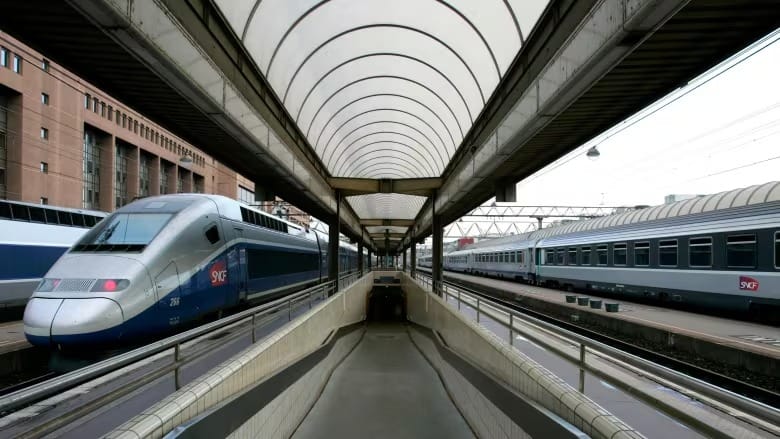How high-speed rail would change Ontario and Quebec — if it actually happens
Research suggests potential to transform smaller cities and reduce housing costs

A high-speed rail line connecting Montreal and Toronto, Canada’s two largest cities, has long been a topic of political campaigns and public imagination. Now, with the federal Liberal government expected to provide more concrete details, the vision is moving closer to becoming a reality.
In Ontario, the proposed route would include stops in Peterborough and Ottawa. In Quebec, it would pass through Laval, Trois-Rivières, and Quebec City.
“For me, this project could revolutionize both Quebec and Canada,” said Stéphane Boyer, the mayor of Laval, located just north of Montreal, in an interview with Radio-Canada. "Connecting cities in a more environmentally friendly way is a game changer."
The train is projected to reach speeds of up to 300 km/h—more than twice as fast as Via Rail’s current service. However, questions remain about how soon the project will materialize and what its eventual impact could be.
Regional Impact
More than half of Canada’s population lives along the corridor stretching from Quebec City to Windsor, Ontario. Some advocates hope the new rail line will extend across this entire region.
Research from Japan suggests that high-speed rail can alleviate housing costs and road congestion by enabling people to live farther from city centers.
“High-speed rail has made mid-sized cities more attractive,” said Yonah Freemark, a transit researcher at the Urban Institute, a Washington, D.C.-based think tank.
Freemark cited Lille, France, as an example. Located between Paris and London, Lille experienced significant business growth after the completion of a high-speed rail line connecting the two capitals.
He suggested that cities like Peterborough and Trois-Rivières could see similar economic benefits, with Quebec City also likely to attract more tourists and businesses.
The planned route would primarily use electric trains, providing a low-emission transportation option that could reduce the number of cars on the road.
Population Viability: Lessons from Italy
Freemark compared the proposed Canadian line to Italy’s high-speed route between Turin and Naples, which serves a similar population and distance.
“It shows that if you offer very fast service with frequent trains and affordable fares, many people will choose rail over cars or planes,” he said.
The Italian example is one of several global cases where high-speed rail has successfully shifted travel patterns. Freemark also noted that a rail link between Calgary and Edmonton, currently under federal study, holds similar promise.
Financial Challenges
Transport Canada estimates the high-speed rail project could cost up to $80 billion, although some experts warn that the total could rise to $120 billion.
Cautionary tales abound—most notably the high-speed rail project between Los Angeles and San Francisco. Initially approved in 2008 with a $33 billion budget and a 2020 completion target, the project has experienced significant delays and cost overruns. Now labeled the "bullet train to nowhere," the projected cost has ballooned to $180 billion.
Canada, compared to other developed nations, remains far behind in rail infrastructure investment.
Timeline and Feasibility
The project’s design phase is expected to take four to five years, with funding allocated afterward. However, with a federal election approaching, a new government could alter or cancel the initiative.
If built, the high-speed line could reduce travel time between Montreal and Toronto to under three hours—shorter than current trips by car, train, or even some flights when factoring in airport security and transit times.
Currently, Via Rail operates at speeds of 60 to 120 km/h, sharing tracks with freight trains that have priority.
“This project is a no-brainer,” said John Gradek, a faculty lecturer at McGill University with expertise in aviation and rail service.
Gradek noted that approximately 150 flights operate daily between cities along the proposed route, contributing to airport congestion, particularly in Montreal. To address this, he recommended diverting investments from road and airport expansions to rail infrastructure.
“The investments needed for roads and airports will become unsustainable compared to the benefits that high-speed rail could offer,” he concluded.





